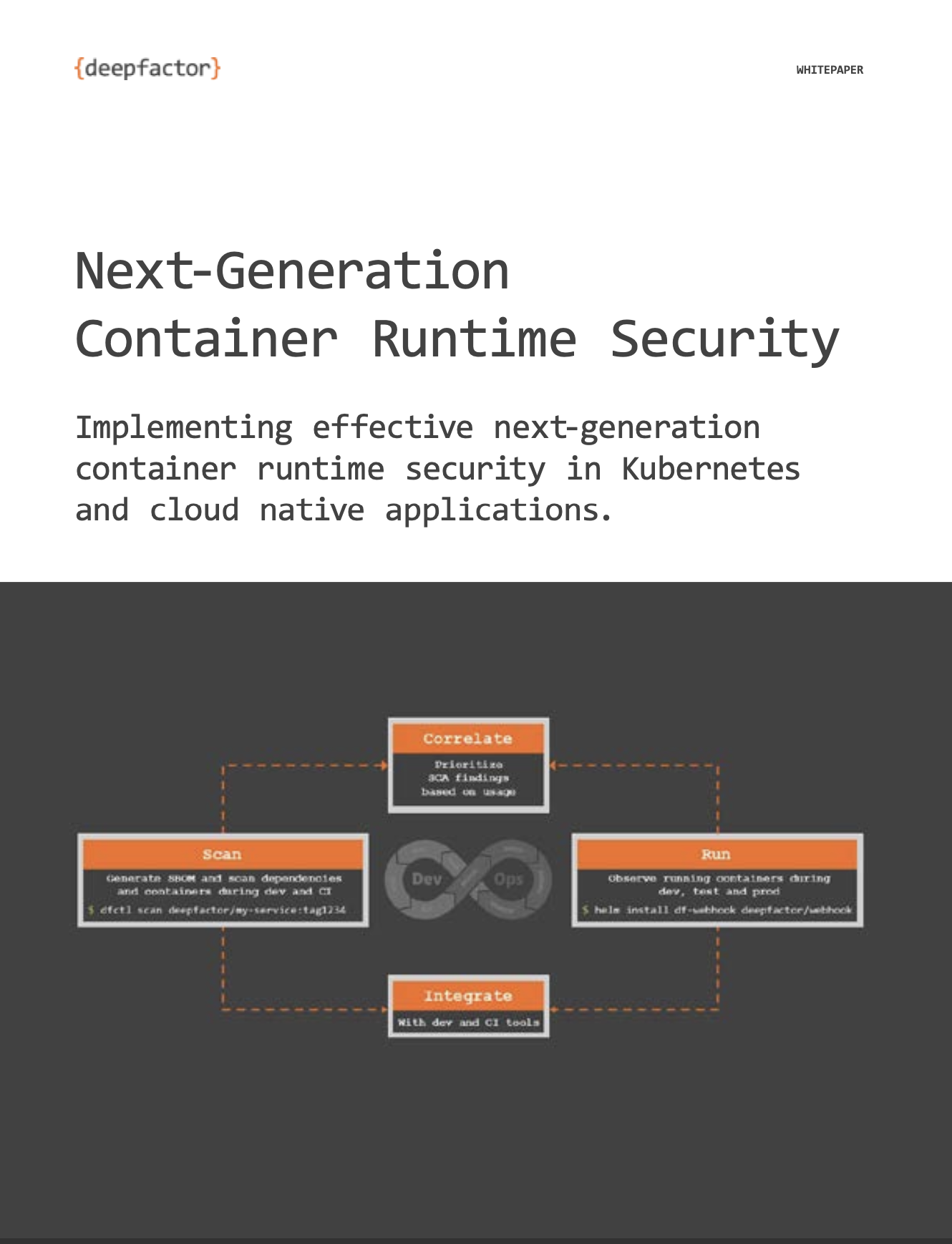
This whitepaper provides a comprehensive review of the challenges, advantages, and characteristics of implementing effective next-generation container runtime security in Kubernetes and cloud native applications. In addition to perimeter protection such as Web Application Firewalls (WAF), security teams need to observe and detect high-risk runtime behaviors in containers to effectively mitigate new threats and ensure compliance with regulatory standards such as SOC 2 Type 2 and PCI.
Container runtime security is vital to detecting insecure behaviors across file operations, network communications, process execution, and memory usage. Container runtime security is not only crucial during the development and testing phases for vulnerability identification and remediation before deployment to production but also for continuous monitoring of applications running in production. It provides real-time attack detection and mitigation, helps meet compliance and regulatory requirements, and provides runtime context for development, QA, and security.
Traditional runtime security tools are often challenging to deploy in modern cloud native environments because they have limited deployment options and no correlation with AppSec tools used by developers and in production. Modern solutions like the Deepfactor Application Security platform overcome these issues with increased visibility and protection, flexible deployment models and most importantly, a way to improve actionability in security remediation by correlating behavior and usage with vulnerabilities found in the CI pipeline (by Deepfactor or by other tools).
Deepfactor’s approach to container runtime security is a next-generation solution that provides analysis during development and testing, as well as monitoring during production. Using a patented API Interception technique, Deepfactor provides rich insights into application behavior without requiring intrusive agents, sidecars, or kernel modifications.
